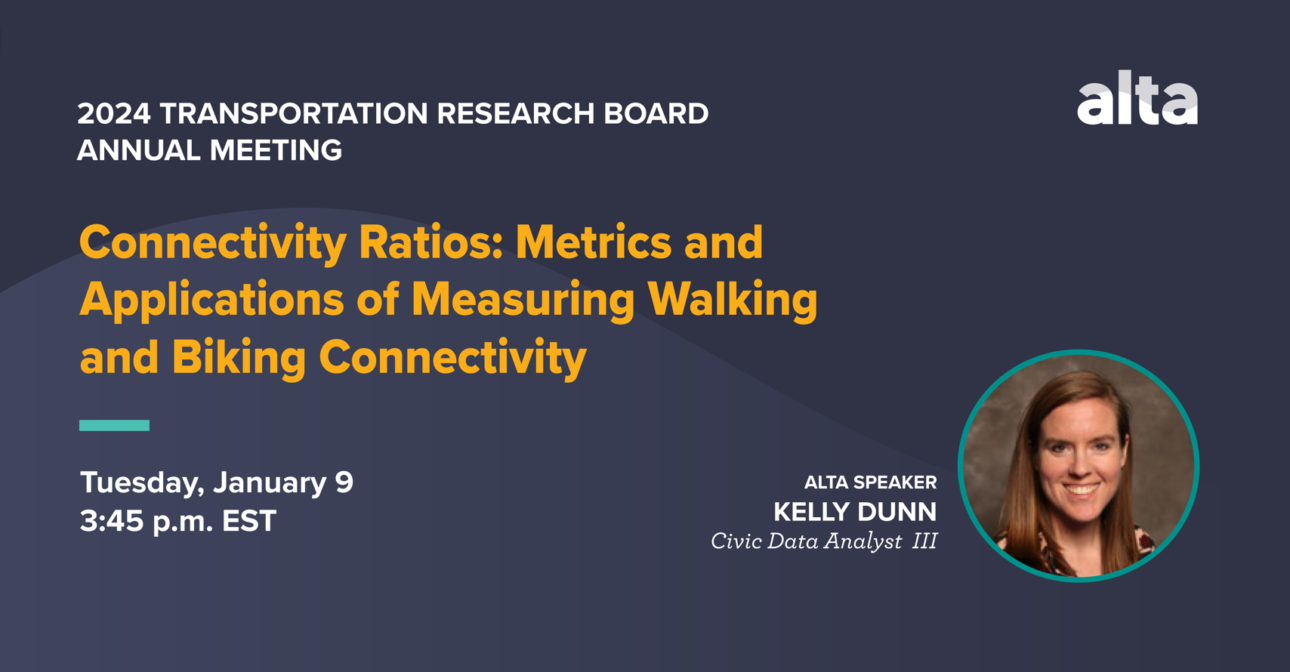Join us at the 2024 Transportation Research Board (TRB) Annual Meeting in Washington, DC, from January 7th-11th. This highly recognized five-day conference draws thousands of transportation professionals from across the globe. As an integral part of the National Academies of Sciences, Engineering, and Medicine, TRB harnesses a wealth of expertise, experience, and knowledge to proactively tackle intricate challenges in the realm of transportation. Encompassing all modes of transportation, TRB’s annual meeting features engaging sessions and workshops tailored to captivate the interest of policy makers, administrators, practitioners, researchers, as well as representatives from government, industry, and academic institutions.
Want to know who’s coming? Alta’s Micromobility Lead Mike Sellinger and National Roadway Safety Lead Jeremy Chapman will be in attendance. Alta is also excited to have Civic Data Analyst III Kelly Dunn participate in this year’s annual meeting on January 9th, as she presents at the following session:
Connectivity Ratios: Metrics and Applications of Measuring Walking and Biking Connectivity
Tuesday, January 9 | 3:45 p.m.
Active travel networks often encounter a range of barriers, resulting in gaps that disrupt connectivity. Numerous studies have strived to equip practitioners and researchers with effective methods to assess walking and cycling connectivity. This paper proposes a technique for computing connectivity ratios for walking and cycling routes. These ratios represent the reachable areas on walking and bicycling networks relative to an equivalent “as-the-crow-flies” buffer zone, using both raw and stress-adjusted travel times. Conceptually, these ratios offer an intuitive and sturdy measure of multimodal network connectivity, aligning with the revealed route preference literature and network quality frameworks like the Level of Traffic Stress. Two case studies—a mobility plan in Mt. Shasta, California, and an access-to-transit study in Durham, North Carolina—demonstrate the implementation of these ratios in practice. These case studies illustrate guidance for applying these metrics in practice in ways that avoid sampling biases common to accessibility modeling. The paper concludes with a theoretical discussion on how this metric could fit into a conceptual framework for multimodal concurrency, focusing on the requirements of active travel models through connectivity targets. Ultimately, connectivity ratios can be used to pinpoint gaps, prioritize enhancements, and shape future infrastructure needs for active modes in response to anticipated land use changes.
Alta Speaker: Kelly Dunn
Alta Contributors: Kelly Dunn, David Wasserman, Kim Voros
We look forward to seeing you there!


